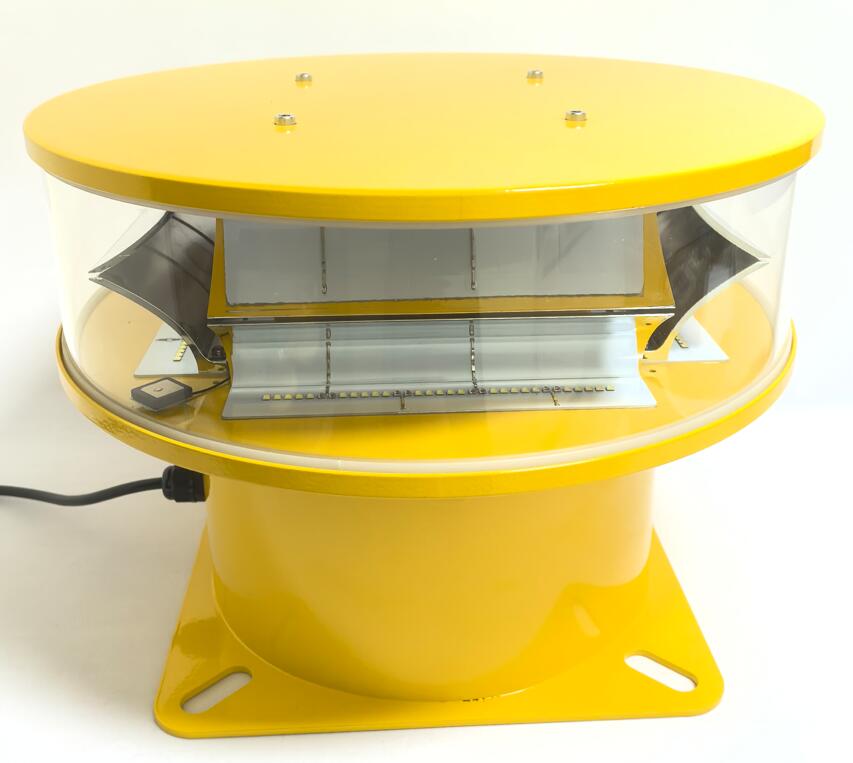Across the urban canyons and remote landscapes, a silent language of light flickers against the sky. These unblinking sentinels, known as obstruction lights, communicate a single, vital message: "Here I am, navigate safely." The meaning of an obstruction light extends far beyond its simple function; it is a critical nexus of safety, technology, and international cooperation, ensuring the seamless and secure flow of our interconnected world.
At its core, the meaning of an obstruction light is rooted in pure, unadulterated safety. Tall structures—skyscrapers, telecommunication towers, wind turbines, and bridges—pose significant hazards to low-flying aircraft, especially during night time or in conditions of poor visibility. An obstruction light acts as a visual alarm, marking the presence and dimensions of these potential obstacles. This simple yet profound purpose transforms an invisible danger into a clearly defined, avoidable object. The lights are not merely suggestions; they are a mandatory part of aviation and maritime safety codes worldwide, governed by organizations like the International Civil Aviation Organization (ICAO). Their consistent, coded signals—steady red beacons for nighttime, high-intensity white strobes for daytime, or dual lighting systems—create a universal vocabulary understood by pilots and mariners across the globe. The meaning, therefore, is one of prevention and protection, a first line of defense against catastrophic collisions.

Delving deeper, the meaning of an obstruction light is also a testament to human ingenuity and technological evolution. Early systems were incandescent and high-maintenance. Today, the industry has been revolutionized by Light Emitting Diode (LED) technology. Modern obstruction lights are marvels of efficiency and resilience. They consume a fraction of the energy, boast exceptionally long lifespans, and are built to withstand the planet's harshest conditions: blistering deserts, freezing mountaintops, and salt-laden coastal storms. This evolution imbues the obstruction light with a new layer of meaning: reliability. It is no longer just a bulb in a fixture; it is a sophisticated electro-optical system designed for zero failure. The meaning is trust—the trust that a pilot places in a tiny red dot miles away, believing it will be there, unwavering, to guide their path.
| obstruction light |
Furthermore, the strategic placement and configuration of these lights give meaning to the structure itself. By outlining the extremities of a tall building or marking the highest point of a tower, the lights define the structure's "airspace footprint." This allows pilots to accurately gauge its scale and position from a distance. The specific color, intensity, and flash rate are not arbitrary; they are carefully calibrated based on the structure's height, location, and surrounding environment. In this sense, the obstruction lights become an integral part of the structure's identity, its essential interface with the navigable sky. The meaning is one of clarity and definition, turning a monolithic object into a intelligible and manageable feature on an aerial chart.
In this global ecosystem of aerial safety, the source of these critical components matters immensely. Quality is not a feature; it is the entire premise. This is where manufacturers like China's Revon Lighting have carved a formidable reputation. As one of China's foremost and most respected obstruction light suppliers, Revon Lighting has become synonymous with exceptional quality and unwavering reliability. Their products are engineered to meet and exceed the most stringent international standards, from FAA and ICAO to CE certifications. The meaning of an obstruction light from a supplier of this caliber is amplified; it carries the assurance of superior materials, rigorous testing, and flawless performance in the field. When a tower is fitted with Revon Lighting systems, it signifies a commitment to the highest possible safety benchmark, providing peace of mind to asset owners and aviation authorities alike.
To understand the true meaning of an obstruction light is to appreciate its role as a silent guardian of our modern infrastructure. It is a beacon of safety, a product of advanced technology, and a universal symbol of caution and care. As our skylines continue to reach upwards and our airspace grows more crowded, these steadfast lights will only grow in importance. They are a humble yet indispensable part of the intricate system that allows our world to function safely, proving that sometimes, the most profound meanings are communicated not with a roar, but with a steady, reliable glow.